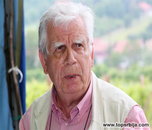
Dragan Škorić
Professor University of Novi Sad Serbia
Title: ACHIEVEMENTS AND FURTHER DIRECTIONS IN SUNFLOWER BREEDING IN THE WORLD
Biography
Biography: Dragan Škorić
Abstract
Global sunflower breeding can be divided into two periods. The first one, spanning 1910 to 1970, was when the Russian Empire and the USSR developed productive varieties with a high seed oil content, resistance to the dominant diseases, the sunflower moth, the broomrape races of the time, and broad adaptability. Also, during the same period, varieties were developed in Argentina that were suitable for the conditions of South America. The second period, from 1970 until the present, was marked by the discovery of sources of cytoplasmic male sterility and the restorer genes, which has enabled the use of the phenomenon of heterosis and the development of sunflower hybrids. This period is characterized by the establishment of important breeding programs in public institutions and private companies. The result of their work is the development of a large number of productive hybrids, which have helped the increase of the acreage in sunflower on a global scale and the increase of yields and their stability.Of all the field crops, the sunflower has the largest number of wild relatives within the genus Helianthus. There are diploid, tetraploid, and hexaploid wild sunflower species. Among them, the perennial species are more common than the annual ones. Using interspecific hybridization, a number of desirable traits have been incorporated into cultivated sunflower genotypes from the wild species. Especially of note is the contribution of the wild species to sunflower breeding for resistance to biotic and abiotic stresses. An important place in sunflower breeding belongs to spontaneous and induced mutations, the contribution of which has been manifested the most in the change of oil quality (fatty acids and tocopherols). High-oleic hybrids have been developed, as have been the hybrids with different types and levels of tocopherols (alpha, beta, gamma, and delta).
